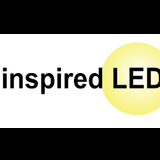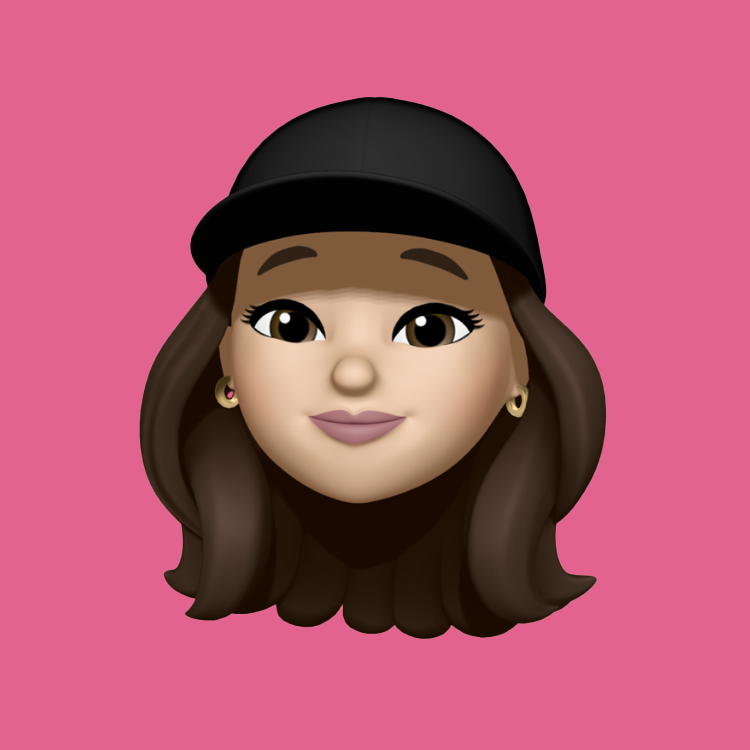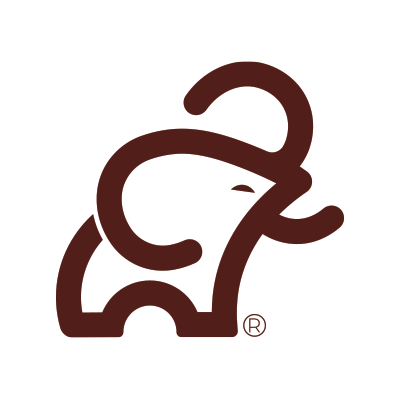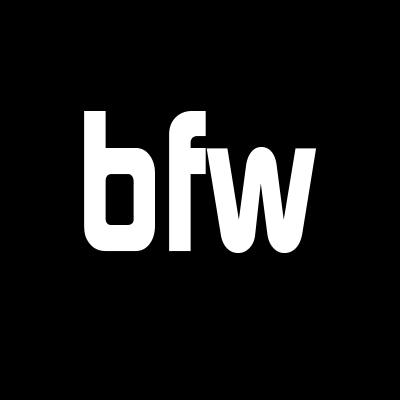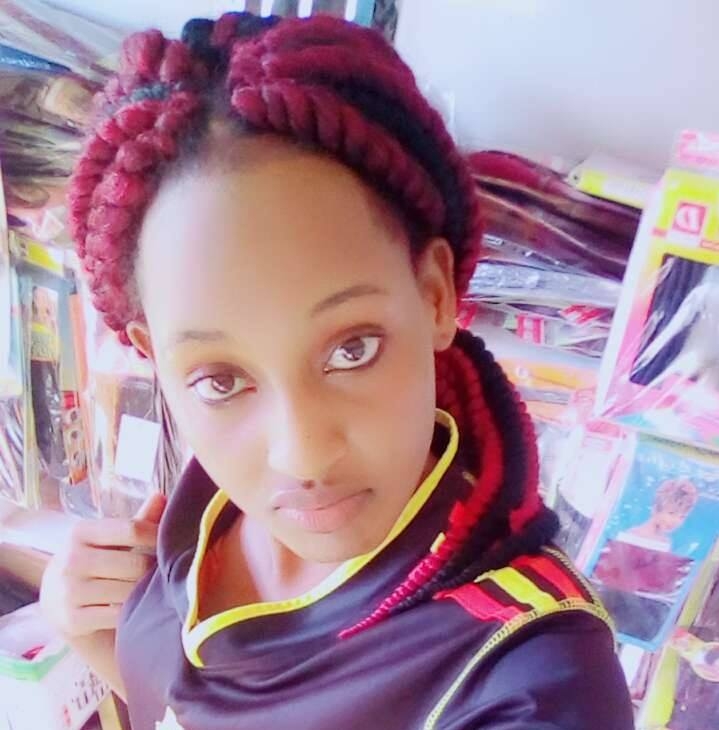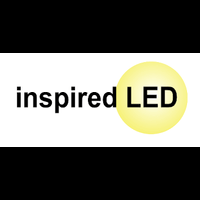إعلان مُمول
التحديثات الأخيرة
- How to Install Flexible LED Strips on the Interior of a Glass Faced Cabinet
Under cabinet lighting is not your only option when it comes to adding LEDs to your kitchen. Glass cabinet lighting serves as a great source of accent lighting, helping to make your cabinets pop and your glassware glow. After years of design consultations, our expert Lighting Designers have found the easiest way to install glass cabinet lighting is an upside-down “U” position along the front of your cabinet. This ensures an even distribution of light throughout the cabinet while ensuring the LED light strips stay hidden when glass cabinet doors are closed.
Items you will need to complete this project:
Drill and drill bit
Screw driver
Normal Bright Flexible Strip
Cable (or power supply depending on system set up)
Step 1: Prep
Remove the shelving, and the cabinet door(s).
Make sure the inside of the cabinet is wiped down and cleaned to ensure the adhesive will stick to the inside of the cabinet.
Step 2: Drill a hole
In order to allow cable (and therefore power) to pass through to your LEDs, you will need to drill a small entry hole to your cabinet.
The ideal location for your hole will vary depending on your set-up, but typically, when connecting to an under-cabinet lighting system, you’ll want to drill through the front left or the front right bottom corner of your cabinet.
On the other hand, if you are connecting to a run of lights above your cabinets you may want to drill a hole near the top center of the cabinet. This will allow you to connect to a mid-connector in the middle of your LED strip, powering down each side.
Step 3: Install the Flexible LED Strip
Inspired LED recommends installing your flexible LED strip in an upside-down “U” shape.
Start at one side of the cabinet to apply the flexible strip. You may want to draw a line along the inside of the cabinet for guidance. Work your way around the front perimeter of the cabinet, keeping it as close to the front as possible to avoid interference with shelving or door hinges.
Continue around the cabinet, peeling the adhesive as you go.
When approaching a corner don’t be afraid to bend the flexible strip. Just be conscious of the resistors and solder joints(silver dots) which are fragile.
Step 4: Finishing touches
Note that everything is in place, then plug in the lights to ensure they are working properly.
Then, simply re-attach the door to the cabinet.
The LEDs should be hidden by the frame of the front glass cabinet, giving the cabinet beautiful accent lighting! Installing Flexible Strips for Glass Cabinet Lighting
Lighting the cabinet with a single flexible strip allows for even distribution of light across the entire cabinet. This is unlike puck lights which can create a “spotlight” effect inside a cabinet, only providing light for the upper shelf. This installation is preferential if your shelves are wood or glass!
Source: https://www.inspiredled.com/led-kitchen-lighting/how-to-installing-glass-cabinet-lighting/
Check out Our Other Articles:
https://www.inspiredled.com/inspired-led-products/inspired-led-101-part-2-how-to-bend-led-flex-strips/
https://www.inspiredled.com/technical-guides-and-tutorials/diy-project-tutorial-led-car-lighting/
https://www.inspiredled.com/inspired-led-products/inspired-led-101-minimizing-the-dot-effect/
https://www.inspiredled.com/inspired-led-products/inspired-led-101-how-to-hardwire/
https://www.inspiredled.com/technical-guides-and-tutorials/get-this-look-part-4-ceiling-accent-lighting/
https://www.inspiredled.com/how-to-videos/diy-project-tutorial-glowing-shelf-light/
https://www.inspiredled.com/led-office-workshops/lighting-garage-workshop/
https://www.inspiredled.com/led-television-accent-lighting/where-to-add-toe-kick-lighting-around-your-home/
https://www.inspiredled.com/led-television-accent-lighting/get-this-look-the-floating-shelf/
https://www.inspiredled.com/inspired-led-products/led-light-color-temperature-warm-vs-cool-white/
How to Install Flexible LED Strips on the Interior of a Glass Faced Cabinet Under cabinet lighting is not your only option when it comes to adding LEDs to your kitchen. Glass cabinet lighting serves as a great source of accent lighting, helping to make your cabinets pop and your glassware glow. After years of design consultations, our expert Lighting Designers have found the easiest way to install glass cabinet lighting is an upside-down “U” position along the front of your cabinet. This ensures an even distribution of light throughout the cabinet while ensuring the LED light strips stay hidden when glass cabinet doors are closed. Items you will need to complete this project: Drill and drill bit Screw driver Normal Bright Flexible Strip Cable (or power supply depending on system set up) Step 1: Prep Remove the shelving, and the cabinet door(s). Make sure the inside of the cabinet is wiped down and cleaned to ensure the adhesive will stick to the inside of the cabinet. Step 2: Drill a hole In order to allow cable (and therefore power) to pass through to your LEDs, you will need to drill a small entry hole to your cabinet. The ideal location for your hole will vary depending on your set-up, but typically, when connecting to an under-cabinet lighting system, you’ll want to drill through the front left or the front right bottom corner of your cabinet. On the other hand, if you are connecting to a run of lights above your cabinets you may want to drill a hole near the top center of the cabinet. This will allow you to connect to a mid-connector in the middle of your LED strip, powering down each side. Step 3: Install the Flexible LED Strip Inspired LED recommends installing your flexible LED strip in an upside-down “U” shape. Start at one side of the cabinet to apply the flexible strip. You may want to draw a line along the inside of the cabinet for guidance. Work your way around the front perimeter of the cabinet, keeping it as close to the front as possible to avoid interference with shelving or door hinges. Continue around the cabinet, peeling the adhesive as you go. When approaching a corner don’t be afraid to bend the flexible strip. Just be conscious of the resistors and solder joints(silver dots) which are fragile. Step 4: Finishing touches Note that everything is in place, then plug in the lights to ensure they are working properly. Then, simply re-attach the door to the cabinet. The LEDs should be hidden by the frame of the front glass cabinet, giving the cabinet beautiful accent lighting! Installing Flexible Strips for Glass Cabinet Lighting Lighting the cabinet with a single flexible strip allows for even distribution of light across the entire cabinet. This is unlike puck lights which can create a “spotlight” effect inside a cabinet, only providing light for the upper shelf. This installation is preferential if your shelves are wood or glass! Source: https://www.inspiredled.com/led-kitchen-lighting/how-to-installing-glass-cabinet-lighting/ Check out Our Other Articles: https://www.inspiredled.com/inspired-led-products/inspired-led-101-part-2-how-to-bend-led-flex-strips/ https://www.inspiredled.com/technical-guides-and-tutorials/diy-project-tutorial-led-car-lighting/ https://www.inspiredled.com/inspired-led-products/inspired-led-101-minimizing-the-dot-effect/ https://www.inspiredled.com/inspired-led-products/inspired-led-101-how-to-hardwire/ https://www.inspiredled.com/technical-guides-and-tutorials/get-this-look-part-4-ceiling-accent-lighting/ https://www.inspiredled.com/how-to-videos/diy-project-tutorial-glowing-shelf-light/ https://www.inspiredled.com/led-office-workshops/lighting-garage-workshop/ https://www.inspiredled.com/led-television-accent-lighting/where-to-add-toe-kick-lighting-around-your-home/ https://www.inspiredled.com/led-television-accent-lighting/get-this-look-the-floating-shelf/ https://www.inspiredled.com/inspired-led-products/led-light-color-temperature-warm-vs-cool-white/0 التعليقات 0 المشاركات 706 مشاهدة 0 0 معاينةالرجاء تسجيل الدخول , للأعجاب والمشاركة والتعليق على هذا! - Bookshelf Lighting - Hardwired System
Measure available space for Flexible LED Strip:
In this system we are lighting a bookcase. There are two main methods when it comes to lighting a bookcase. You can run the LED strips horizontally across each shelf like we did in this design. The other option is to mount the LED strips vertically going up each column holding the shelves in place. How you decide to mount the LED strips will come down to your personal preference. We suggest mounting the LED strips wherever you have a lip to hide the LEDs behind. For the bookshelves we used our Normal Bright Flexible LED strips, these provide nice accent lighting and can be ran further distances than a brighter LED strip.
Mounting the Flexible LED Strips:
We mounted the LED strip on the lip of the shelves so the LEDs face towards the back of the bookcase. This will illuminate the entire shelf below it. To keep the light output consistent you can drill a 5/8” hole between each separator to keep the LED strip one long continuous run. This keeps your light output consistent, preventing any shadows between separations. The LED strips are mounted with the adhesive on the back of the Flexible LED strip. To insure a strong hold make sure you clean the area with a cleaning solution before installing the LED strip.
Installing your Transformer:
Before we run cables to our LED strips, we need to install the transformer. This device will take the line voltage (120VAC) coming from your house and step it down to 12VDC. We used a 100w magnetic transformer to power all of the LED strips. We suggest mounting the transformer in a location that will not be seen. In this project we installed the transformer on top of the bookcase. An electrician ran high voltage from the switch location to the top of the bookcase where we terminated the high voltage lines to the transformer. From here we can run our low voltage cable from the transformer to the LED Strip locations. *Make sure to have a licensed electrician or contractor install your transformer.
Running Cable to the Flexible LED Strips:
Make sure power is off before you start making connections to your transformer. In this system we are using standard Interconnect Cables to make our connections from the transformer to the LED Strips. To start, you will need to cut one of the connectors off of the Interconnect Cable. Then expose a small amount of copper on the Interconnect Cable using cable strippers. Look for a white writing on one of the sides of the cable, this indicates your (+) positive lead. The side without writing indicates your (-) negative lead. Splice the positive lead to the red lead coming from the output of the transformer and splice the negative lead to the blue cable on the output side of the transformer. After you splice all of your cables to the output of the transformer cap the splices with wire nuts to secure the cable connections. You should now have as many cables coming from the transformer as you have LED strips in the system, run a cable to each LED strip. Finally test the lights by turning them on!
Source: https://www.inspiredled.com/product/bookcase-lighting-hardwired-system/
Check out Related Blogs:
Bookshelf Lighting
How-To: Installing Glass Cabinet Lighting
Inspired LED 101: Part 2- How to Bend LED Flex Strips
DIY Project Tutorial: LED Car Lighting
Inspired LED 101: Minimizing the “Dot Effect”
Inspired LED 101: How to Hardwire
Ceiling Accent Lighting
DIY Project Tutorial: Glowing Shelf Light
Lighting your Garage or Workshop
Where to Add Toe-Kick Lighting Around Your Home
Get This Look: The “Floating” Shelf
LED Light Color Temperature: Warm vs Cool White
Bookshelf Lighting - Hardwired System Measure available space for Flexible LED Strip: In this system we are lighting a bookcase. There are two main methods when it comes to lighting a bookcase. You can run the LED strips horizontally across each shelf like we did in this design. The other option is to mount the LED strips vertically going up each column holding the shelves in place. How you decide to mount the LED strips will come down to your personal preference. We suggest mounting the LED strips wherever you have a lip to hide the LEDs behind. For the bookshelves we used our Normal Bright Flexible LED strips, these provide nice accent lighting and can be ran further distances than a brighter LED strip. Mounting the Flexible LED Strips: We mounted the LED strip on the lip of the shelves so the LEDs face towards the back of the bookcase. This will illuminate the entire shelf below it. To keep the light output consistent you can drill a 5/8” hole between each separator to keep the LED strip one long continuous run. This keeps your light output consistent, preventing any shadows between separations. The LED strips are mounted with the adhesive on the back of the Flexible LED strip. To insure a strong hold make sure you clean the area with a cleaning solution before installing the LED strip. Installing your Transformer: Before we run cables to our LED strips, we need to install the transformer. This device will take the line voltage (120VAC) coming from your house and step it down to 12VDC. We used a 100w magnetic transformer to power all of the LED strips. We suggest mounting the transformer in a location that will not be seen. In this project we installed the transformer on top of the bookcase. An electrician ran high voltage from the switch location to the top of the bookcase where we terminated the high voltage lines to the transformer. From here we can run our low voltage cable from the transformer to the LED Strip locations. *Make sure to have a licensed electrician or contractor install your transformer. Running Cable to the Flexible LED Strips: Make sure power is off before you start making connections to your transformer. In this system we are using standard Interconnect Cables to make our connections from the transformer to the LED Strips. To start, you will need to cut one of the connectors off of the Interconnect Cable. Then expose a small amount of copper on the Interconnect Cable using cable strippers. Look for a white writing on one of the sides of the cable, this indicates your (+) positive lead. The side without writing indicates your (-) negative lead. Splice the positive lead to the red lead coming from the output of the transformer and splice the negative lead to the blue cable on the output side of the transformer. After you splice all of your cables to the output of the transformer cap the splices with wire nuts to secure the cable connections. You should now have as many cables coming from the transformer as you have LED strips in the system, run a cable to each LED strip. Finally test the lights by turning them on! Source: https://www.inspiredled.com/product/bookcase-lighting-hardwired-system/ Check out Related Blogs: Bookshelf Lighting How-To: Installing Glass Cabinet Lighting Inspired LED 101: Part 2- How to Bend LED Flex Strips DIY Project Tutorial: LED Car Lighting Inspired LED 101: Minimizing the “Dot Effect” Inspired LED 101: How to Hardwire Ceiling Accent Lighting DIY Project Tutorial: Glowing Shelf Light Lighting your Garage or Workshop Where to Add Toe-Kick Lighting Around Your Home Get This Look: The “Floating” Shelf LED Light Color Temperature: Warm vs Cool White0 التعليقات 0 المشاركات 463 مشاهدة 0 0 معاينة - Bookshelf Lighting - Hardwired System
Measure available space for Flexible LED Strip:
In this system we are lighting a bookcase. There are two main methods when it comes to lighting a bookcase. You can run the LED strips horizontally across each shelf like we did in this design. The other option is to mount the LED strips vertically going up each column holding the shelves in place. How you decide to mount the LED strips will come down to your personal preference. We suggest mounting the LED strips wherever you have a lip to hide the LEDs behind. For the bookshelves we used our Normal Bright Flexible LED strips, these provide nice accent lighting and can be ran further distances than a brighter LED strip.
Mounting the Flexible LED Strips:
We mounted the LED strip on the lip of the shelves so the LEDs face towards the back of the bookcase. This will illuminate the entire shelf below it. To keep the light output consistent you can drill a 5/8” hole between each separator to keep the LED strip one long continuous run. This keeps your light output consistent, preventing any shadows between separations. The LED strips are mounted with the adhesive on the back of the Flexible LED strip. To insure a strong hold make sure you clean the area with a cleaning solution before installing the LED strip.
Installing your Transformer:
Before we run cables to our LED strips, we need to install the transformer. This device will take the line voltage (120VAC) coming from your house and step it down to 12VDC. We used a 100w magnetic transformer to power all of the LED strips. We suggest mounting the transformer in a location that will not be seen. In this project we installed the transformer on top of the bookcase. An electrician ran high voltage from the switch location to the top of the bookcase where we terminated the high voltage lines to the transformer. From here we can run our low voltage cable from the transformer to the LED Strip locations. *Make sure to have a licensed electrician or contractor install your transformer.
Running Cable to the Flexible LED Strips:
Make sure power is off before you start making connections to your transformer. In this system we are using standard Interconnect Cables to make our connections from the transformer to the LED Strips. To start, you will need to cut one of the connectors off of the Interconnect Cable. Then expose a small amount of copper on the Interconnect Cable using cable strippers. Look for a white writing on one of the sides of the cable, this indicates your (+) positive lead. The side without writing indicates your (-) negative lead. Splice the positive lead to the red lead coming from the output of the transformer and splice the negative lead to the blue cable on the output side of the transformer. After you splice all of your cables to the output of the transformer cap the splices with wire nuts to secure the cable connections. You should now have as many cables coming from the transformer as you have LED strips in the system, run a cable to each LED strip. Finally test the lights by turning them on!
Source: https://www.inspiredled.com/product/bookcase-lighting-hardwired-system/
Check out Related Blogs:
Bookshelf Lighting
How-To: Installing Glass Cabinet Lighting
Inspired LED 101: Part 2- How to Bend LED Flex Strips
DIY Project Tutorial: LED Car Lighting
Inspired LED 101: Minimizing the “Dot Effect”
Inspired LED 101: How to Hardwire
Ceiling Accent Lighting
DIY Project Tutorial: Glowing Shelf Light
Lighting your Garage or Workshop
Where to Add Toe-Kick Lighting Around Your Home
Get This Look: The “Floating” Shelf
LED Light Color Temperature: Warm vs Cool White
Bookshelf Lighting - Hardwired System Measure available space for Flexible LED Strip: In this system we are lighting a bookcase. There are two main methods when it comes to lighting a bookcase. You can run the LED strips horizontally across each shelf like we did in this design. The other option is to mount the LED strips vertically going up each column holding the shelves in place. How you decide to mount the LED strips will come down to your personal preference. We suggest mounting the LED strips wherever you have a lip to hide the LEDs behind. For the bookshelves we used our Normal Bright Flexible LED strips, these provide nice accent lighting and can be ran further distances than a brighter LED strip. Mounting the Flexible LED Strips: We mounted the LED strip on the lip of the shelves so the LEDs face towards the back of the bookcase. This will illuminate the entire shelf below it. To keep the light output consistent you can drill a 5/8” hole between each separator to keep the LED strip one long continuous run. This keeps your light output consistent, preventing any shadows between separations. The LED strips are mounted with the adhesive on the back of the Flexible LED strip. To insure a strong hold make sure you clean the area with a cleaning solution before installing the LED strip. Installing your Transformer: Before we run cables to our LED strips, we need to install the transformer. This device will take the line voltage (120VAC) coming from your house and step it down to 12VDC. We used a 100w magnetic transformer to power all of the LED strips. We suggest mounting the transformer in a location that will not be seen. In this project we installed the transformer on top of the bookcase. An electrician ran high voltage from the switch location to the top of the bookcase where we terminated the high voltage lines to the transformer. From here we can run our low voltage cable from the transformer to the LED Strip locations. *Make sure to have a licensed electrician or contractor install your transformer. Running Cable to the Flexible LED Strips: Make sure power is off before you start making connections to your transformer. In this system we are using standard Interconnect Cables to make our connections from the transformer to the LED Strips. To start, you will need to cut one of the connectors off of the Interconnect Cable. Then expose a small amount of copper on the Interconnect Cable using cable strippers. Look for a white writing on one of the sides of the cable, this indicates your (+) positive lead. The side without writing indicates your (-) negative lead. Splice the positive lead to the red lead coming from the output of the transformer and splice the negative lead to the blue cable on the output side of the transformer. After you splice all of your cables to the output of the transformer cap the splices with wire nuts to secure the cable connections. You should now have as many cables coming from the transformer as you have LED strips in the system, run a cable to each LED strip. Finally test the lights by turning them on! Source: https://www.inspiredled.com/product/bookcase-lighting-hardwired-system/ Check out Related Blogs: Bookshelf Lighting How-To: Installing Glass Cabinet Lighting Inspired LED 101: Part 2- How to Bend LED Flex Strips DIY Project Tutorial: LED Car Lighting Inspired LED 101: Minimizing the “Dot Effect” Inspired LED 101: How to Hardwire Ceiling Accent Lighting DIY Project Tutorial: Glowing Shelf Light Lighting your Garage or Workshop Where to Add Toe-Kick Lighting Around Your Home Get This Look: The “Floating” Shelf LED Light Color Temperature: Warm vs Cool White0 التعليقات 0 المشاركات 416 مشاهدة 0 0 معاينة - 0 التعليقات 0 المشاركات 117 مشاهدة 0 معاينة
المزيد من المنشورات



